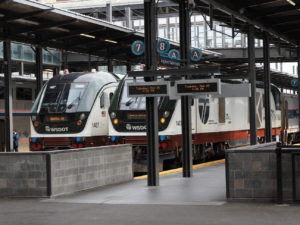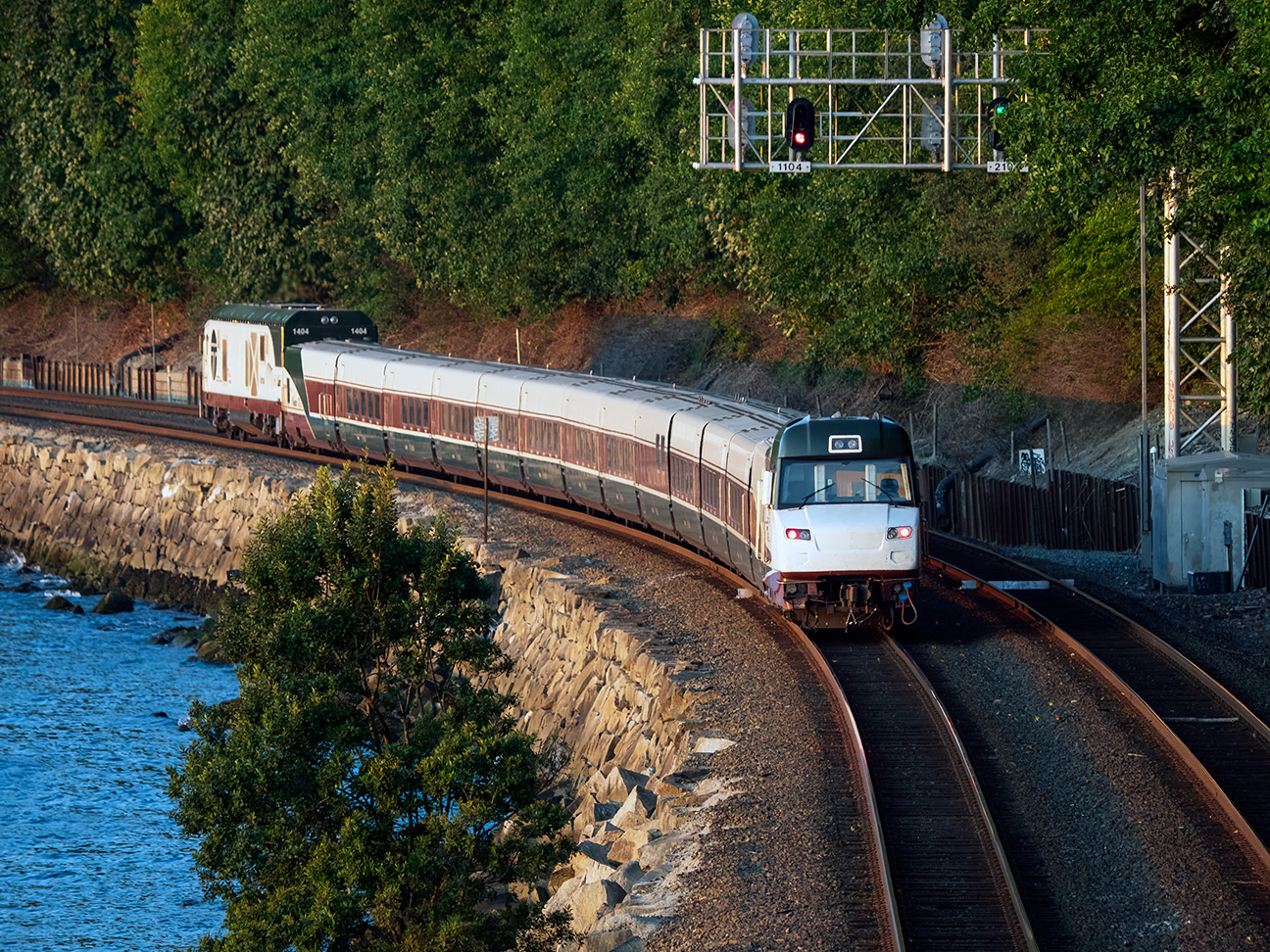Amtrak will restore a second daily round-trip train service between Seattle and Vancouver, B.C., as of March 7th, and promises to boost daily trips between Seattle and Portland from four to six come fall, according to a letter sent to the transportation departments of Washington and Oregon.
Rail service across the U.S.-Canada border was suspended in the spring of 2020 due to the COVID-19 pandemic, with one round trip restored last September. Before the arrival of the once-novel coronavirus, 750,000 people a year took trains between the Northwest’s three largest cities.
The most enthusiastic advocate for restored rail service has been Senator Maria Cantwell, D‑Washington, who just happens to chair the Senate Commerce, Science and Transportation Committee, and championed the bipartisan infrastructure legislation passed by Congress last year. The legislation provided for $66 billion in rail grants, with $22 billion going to Amtrak.
“I’m thankful that Amtrak is finally on the path to fully restore service in the Pacific Northwest,” said Cantwell. “The Interstate 5 corridor in the state of Washington is one of the most congested corridors in the nation and the Cascades service provides a convenient alternative to travelers.”
That’s especially true for those who don’t own a car and would otherwise have to be wholly reliant on intercity bus service from companies like Greyhound.

Representative Rick Larsen, D‑Washington, is well positioned in Congress’ other chamber as ranking Democrat on the House Transportation and Infrastructure Committee, and rode part of the northbound route last year as a nudge directed at Amtrak.
“Thanks to bold long term investments in the bipartisan infrastructure law, Amtrak is able to renew and support routes lie Cascades, Empire Builder and Coast Starlight that connect communities like Edmonds, Everett, Mount Vernon, Stanwood and Bellingham in my district to Vancouver, B.C., Seattle, Portland and Eugene,” said Larsen.
The second daily train between Seattle and Vancouver was originally added in anticipation of the 2010 Winter Olympics in the Canadian city, with arm twisting by Governor Chris Gregoire and British Columbia Premier Gordon Campbell.
Their successors, Governor Jay Inslee and B.C. Premier John Horgan, promoted the eventual creation of high-speed rail service in the corridor between Vancouver and Eugene, Oregon. NPI’s research last year confirmed support for both constructing high-speed rail and Amtrak Cascades expansion.
At times on the verge of extinction – Republican administrations have sought to eliminate its long-distance routes – Amtrak has prospered under the Biden administration. The transcontinental Empire Builder, running between Seattle and Chicago, was restored to daily service last May.
The American Rescue Plan contained $1.7 billion for Amtrak, allowing restoration of such routes as Empire Builder and the City of New Orleans.
Other rail projects have also prospered. The omnibus spending bill passed by Congress last month, which funds the federal government through September 30, included $583 million to support extending Sound Transit’s light rail system south to Federal Way and north into Snohomish County. It also provided $15 million to made the monorail station at Seattle Center accessible to all riders.
The American Rescue Plan Act and the infrastructure package have also been kind to Washington’s regional airports, including those in places unlikely to vote for Cantwell or Senator Patty Murray, D‑Washington, who has just become chair of the Senate Appropriations Committee.
Pangborn Field, serving Wenatchee, is getting $10 million. There’s just over $1 million for a new terminal at the Moscow/Pullman Airport, plus $150,000 for the airport in Ephrata and $110,000 for the field at Ocean Shores.
All told, Washington airports are getting $38.68 million in grants from the Federal Aviation Administration.
The Portland/Seattle/Vancouver route is renowned for its scenery.
The trains used to run along the waters of South Puget Sound before the Point Defiance bypass reopened. Cascades trains still hug the coastline at the base of Blanchard and Chuckanut Mountains south of Bellingham.
The Empire Builder, on its route east, skirts the south boundary of Glacier National Park and provides access at West Glacier and East Glacier.

